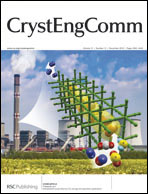A series of mixed-ligand coordination complexes have been prepared using diffusion method, by reacting the CoII, NiII, ZnII, AgI, CdII, CuII, or PbII nitrate with tetrabromoterephthalic acid (H2tbta) and 2,5-bis(4-pyridyl)-1,3,4-oxadiazole (4-bpo). These complexes show various 0D, 1D, 2D, and 3D coordination motifs with different geometries of the metal centers, indicating a metal-directed assembly. The synthetic condition will also affect the resulting crystalline products for ZnII species. Crystal structure analysis reveals that secondary interactions such as hydrogen bonding and aromatic stacking will further extend the coordination arrays to diverse supramolecular architectures. All complexes have been characterized by IR, elemental analysis, and powder X-ray diffraction techniques. In addition, the polymeric coordination systems with d10 metal centers show solid-state fluorescent emissions at room temperature, which thus may be applied as potential hybrid luminescent materials.


 Please wait while we load your content...
Please wait while we load your content...